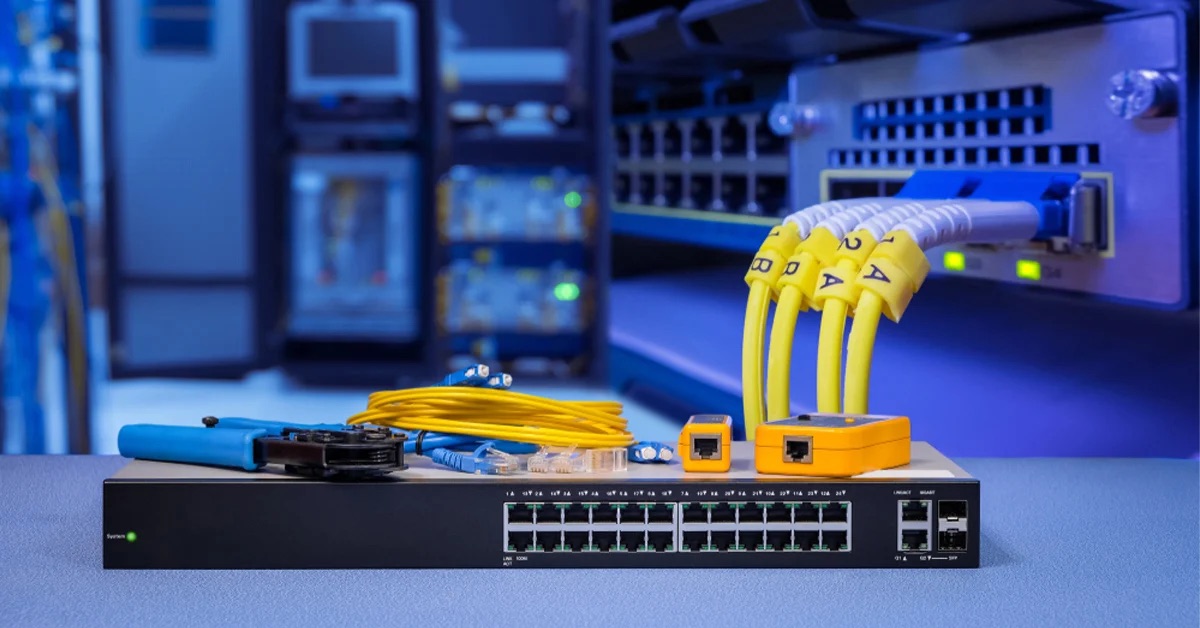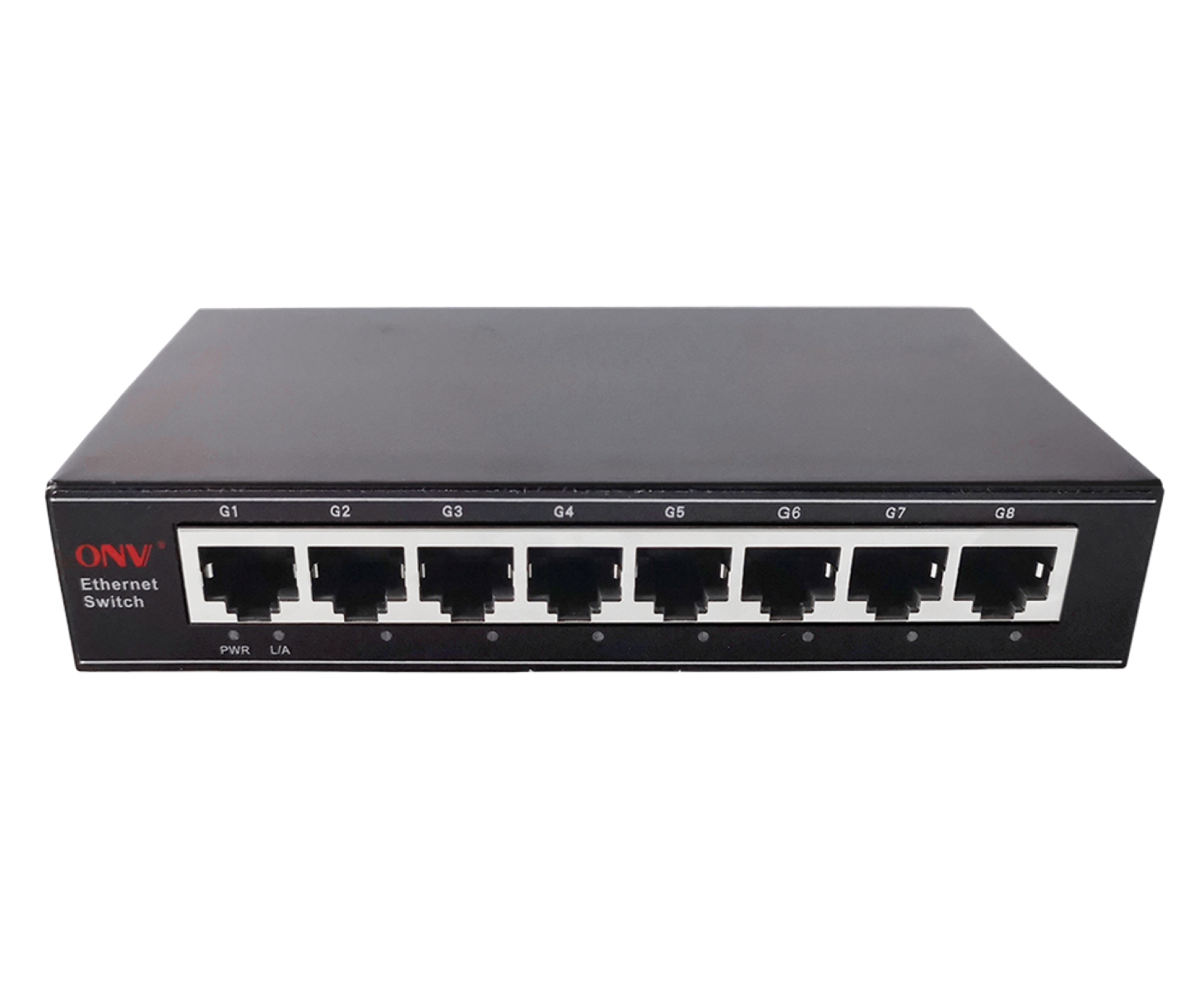Introduction
VoIP (Voice over Internet Protocol) technology has revolutionized communication systems by enabling voice and multimedia transmission over the internet. This advancement has paved the way for cost-effective and efficient communication solutions for both businesses and individuals. However, ensuring high-quality voice transmission over IP networks poses several challenges, one of which is jitter.
Jitter is a common issue encountered in VoIP networks, and its impact on call quality can be significant. Understanding and managing jitter is crucial for maintaining a seamless and uninterrupted communication experience. In the context of VoIP networks, acceptable jitter time plays a pivotal role in ensuring optimal call quality and user satisfaction.
In this article, we will delve into the concept of jitter, explore its implications in VoIP networks, and discuss the significance of acceptable jitter time in VoIP network switches. Additionally, we will examine the factors that influence jitter, methods for determining acceptable jitter time, and best practices for managing jitter in VoIP network switches. By gaining insights into these aspects, network administrators and VoIP system managers can effectively address jitter-related challenges and enhance the overall performance of their VoIP communication infrastructure.
Understanding Jitter
Jitter, in the context of VoIP communication, refers to the variation in the delay of packet arrival. When transmitting voice data over an IP network, packets should ideally arrive at consistent intervals to ensure smooth and continuous playback. However, due to network congestion, varying routes, or differing queuing delays, packets may arrive at the receiving end with irregular timing, leading to jitter.
From a user’s perspective, jitter manifests as disruptions in voice quality during a call. These disruptions can manifest as choppy audio, echoes, or gaps in conversation, ultimately detracting from the overall call experience. High levels of jitter can significantly impact call clarity and coherence, ultimately diminishing the effectiveness of VoIP communication.
Jitter is measured in milliseconds and is characterized by both average and peak values. While the average jitter provides an overall understanding of the delay variation, peak jitter values indicate the maximum delay deviation experienced. Understanding these metrics is essential for evaluating the impact of jitter on call quality and identifying potential areas for improvement within the network infrastructure.
Moreover, jitter can be further categorized into random and deterministic jitter. Random jitter occurs due to unpredictable network conditions, while deterministic jitter stems from specific network elements or equipment, such as switches and routers. Distinguishing between these types of jitter is crucial for implementing targeted mitigation strategies and optimizing network performance.
By comprehending the nature and implications of jitter, network administrators and VoIP system managers can proactively address this challenge and implement measures to minimize its impact on call quality. In the subsequent sections, we will explore the importance of acceptable jitter time in VoIP network switches, shedding light on the critical role it plays in ensuring a seamless and high-quality VoIP communication experience.
Importance of Acceptable Jitter Time in VoIP Network Switch
The concept of acceptable jitter time holds immense significance in the realm of VoIP communication, particularly within the network switch infrastructure. In a VoIP network, the network switch serves as a critical component responsible for routing voice data packets between the sender and receiver. The acceptable jitter time directly influences the network switch’s ability to maintain consistent packet delivery and mitigate the adverse effects of jitter on call quality.
Ensuring an acceptable jitter time is paramount for preserving the integrity of voice data transmission. When jitter exceeds permissible thresholds, it can lead to packet loss, out-of-order packet delivery, and increased latency, all of which contribute to a degraded call experience. By establishing and adhering to acceptable jitter time parameters, network administrators can uphold the quality and reliability of VoIP communication, fostering seamless interactions and enhancing user satisfaction.
Moreover, in the context of VoIP network switches, the enforcement of acceptable jitter time facilitates efficient traffic management and prioritization. By setting appropriate jitter thresholds, network switches can intelligently prioritize voice packets over data packets, ensuring that voice data receives preferential treatment to maintain call quality. This prioritization mechanism is instrumental in mitigating the impact of network congestion and fluctuations, thereby safeguarding the consistency and clarity of voice transmissions.
Furthermore, acceptable jitter time directly influences the overall performance and resilience of VoIP network switches. By adhering to established jitter thresholds, network switches can optimize their packet handling processes, minimize latency, and mitigate the disruptive effects of jitter on voice data transmission. This, in turn, contributes to the seamless and uninterrupted delivery of voice data, bolstering the reliability and effectiveness of VoIP communication systems.
As such, the establishment and maintenance of acceptable jitter time parameters within VoIP network switches are fundamental to ensuring superior call quality, enhancing network efficiency, and delivering a consistently satisfactory user experience. In the subsequent sections, we will delve into the factors that impact jitter in VoIP network switches and explore methods for determining acceptable jitter time, equipping network administrators with valuable insights to proactively manage and optimize their VoIP communication infrastructure.
Factors Affecting Jitter in VoIP Network Switch
Several factors contribute to the occurrence and magnitude of jitter within VoIP network switches, influencing the overall quality and reliability of voice data transmission. Understanding these factors is essential for effectively managing and mitigating jitter-related challenges within the network infrastructure.
1. Network Congestion: High levels of network congestion can exacerbate jitter by causing packet queuing and delays. When network switches experience congestion, the resulting packet queuing can lead to varying packet arrival times at the receiving end, consequently amplifying jitter levels and compromising call quality.
2. Packet Loss and Retransmissions: The occurrence of packet loss and subsequent retransmissions within the network switch environment can contribute to increased jitter. When packets are lost or require retransmission due to network errors or congestion, the timing of packet delivery becomes erratic, leading to heightened jitter levels and potential disruptions in voice data transmission.
3. Network Latency: Latency, which encompasses the time taken for data packets to travel from the sender to the receiver, directly impacts jitter. Elevated latency levels within the network switch infrastructure can introduce inconsistencies in packet arrival times, thereby amplifying jitter and diminishing call quality.
4. Quality of Service (QoS) Configuration: Inadequate or improperly configured Quality of Service settings within network switches can exacerbate jitter by failing to prioritize voice data packets effectively. Without appropriate QoS configurations, voice packets may not receive the necessary preferential treatment, leading to increased susceptibility to jitter-related disruptions.
5. Network Switch Performance: The performance and capacity of network switches play a crucial role in jitter management. Inefficient or overloaded network switches may struggle to handle incoming voice data packets with consistency, resulting in heightened jitter levels and compromised call quality.
By comprehensively assessing and addressing these factors, network administrators can proactively mitigate jitter within VoIP network switches, ultimately fostering a more reliable and seamless VoIP communication experience. In the subsequent sections, we will explore methods for determining acceptable jitter time and best practices for managing jitter in VoIP network switches, equipping administrators with actionable insights to optimize their network infrastructure and enhance call quality.
Determining Acceptable Jitter Time
Establishing acceptable jitter time parameters is crucial for maintaining optimal call quality and mitigating the disruptive effects of jitter within VoIP network switches. The process of determining acceptable jitter time involves comprehensive assessment and consideration of various network and application-specific factors to ensure that voice data transmission remains consistent and reliable.
1. Quality of Service (QoS) Requirements: Understanding the specific QoS requirements of VoIP applications is essential for determining acceptable jitter time. By aligning jitter thresholds with the QoS needs of voice data packets, network administrators can ensure that the network switch prioritizes and delivers voice data with minimal delay variation, thereby upholding call quality.
2. Codec Considerations: The choice of codec used for VoIP communication influences acceptable jitter time parameters. Different codecs may exhibit varying tolerance levels to jitter, necessitating tailored jitter time thresholds to accommodate the characteristics of the selected codec. By accounting for codec-specific requirements, administrators can optimize jitter management within the network switch environment.
3. End-to-End Latency: Evaluating the end-to-end latency experienced within the VoIP network is integral to determining acceptable jitter time. By considering the total latency introduced from the sender to the receiver, administrators can establish jitter thresholds that align with the latency constraints of the network, ensuring consistent voice data transmission.
4. User Experience Expectations: Understanding user experience expectations and call quality standards is paramount in defining acceptable jitter time. By aligning jitter parameters with user expectations and industry benchmarks, network administrators can ensure that voice data transmission meets or exceeds the desired quality standards, enhancing user satisfaction.
5. Network Performance Monitoring: Continuous monitoring of network performance metrics, including jitter levels, packet loss, and latency, facilitates the dynamic determination of acceptable jitter time. By leveraging real-time network performance data, administrators can adjust jitter thresholds to adapt to evolving network conditions and maintain optimal call quality.
By integrating these considerations and insights, network administrators can effectively determine and establish acceptable jitter time parameters within VoIP network switches, fortifying the infrastructure to deliver consistent and high-quality voice data transmission. In the subsequent section, we will delve into best practices for managing jitter in VoIP network switches, equipping administrators with actionable strategies to optimize call quality and enhance the overall VoIP communication experience.
Best Practices for Managing Jitter in VoIP Network Switch
Effectively managing jitter within VoIP network switches is essential for maintaining superior call quality and ensuring a seamless communication experience. By implementing best practices tailored to jitter mitigation, network administrators can optimize the performance and reliability of their VoIP infrastructure, bolstering the overall effectiveness of voice data transmission.
1. Quality of Service (QoS) Configuration: Prioritize voice data packets by implementing robust QoS configurations within the network switches. By assigning appropriate priority levels to voice traffic and allocating sufficient bandwidth, administrators can minimize the impact of network congestion and prioritize voice data delivery, thereby mitigating the effects of jitter on call quality.
2. Network Traffic Management: Employ traffic shaping and bandwidth management techniques to regulate network traffic and minimize jitter-inducing congestion. By intelligently managing network traffic, administrators can ensure consistent and timely delivery of voice data packets, reducing the likelihood of jitter-related disruptions.
3. Packet Loss Mitigation: Implement packet loss mitigation strategies, such as forward error correction (FEC) and redundancy techniques, to mitigate the impact of packet loss on jitter. By proactively addressing packet loss, administrators can minimize the irregularities in packet arrival times, thereby reducing jitter levels and preserving call quality.
4. Network Redundancy and Resilience: Establish network redundancy and resilience measures to mitigate the impact of network failures and fluctuations on jitter. By implementing redundant network paths and failover mechanisms, administrators can minimize the disruptions caused by network instability, ensuring consistent voice data transmission and mitigating jitter-related challenges.
5. Continuous Performance Monitoring: Implement robust network performance monitoring tools to continuously assess jitter levels, latency, and packet delivery consistency. By proactively monitoring network performance, administrators can identify and address jitter-related issues in real time, optimizing call quality and enhancing the reliability of VoIP communication.
6. Codec Optimization: Select and optimize codecs that align with the network’s jitter tolerance and performance requirements. By choosing codecs that exhibit compatibility with the network’s jitter management capabilities, administrators can enhance the resilience of voice data transmission to jitter-related variations, ensuring consistent call quality.
By embracing these best practices, network administrators can proactively manage and mitigate jitter within VoIP network switches, fostering a more reliable and consistent VoIP communication experience. These strategies empower administrators to optimize call quality, enhance user satisfaction, and fortify the resilience of their VoIP infrastructure against the disruptive effects of jitter.
Conclusion
VoIP network switches play a pivotal role in facilitating seamless and high-quality voice data transmission over IP networks. Within this context, the concept of acceptable jitter time emerges as a critical determinant of call quality and user satisfaction. By comprehensively understanding and addressing the factors influencing jitter, network administrators can proactively manage and optimize their VoIP infrastructure to deliver superior communication experiences.
Understanding the nature of jitter and its implications on call quality is imperative for network administrators and VoIP system managers. By recognizing the impact of network congestion, packet loss, latency, and QoS configurations on jitter, administrators can implement targeted strategies to mitigate its disruptive effects and maintain consistent voice data transmission.
Furthermore, the process of determining acceptable jitter time involves a nuanced consideration of QoS requirements, codec characteristics, end-to-end latency, and user experience expectations. By integrating these factors, administrators can establish jitter thresholds that align with the specific needs of their VoIP applications, ensuring optimal call quality and user satisfaction.
Implementing best practices for managing jitter, including robust QoS configurations, network traffic management, packet loss mitigation, and continuous performance monitoring, empowers administrators to fortify their VoIP network switches against the disruptive effects of jitter. By proactively addressing jitter-related challenges, administrators can optimize call quality, enhance user satisfaction, and uphold the reliability of their VoIP communication infrastructure.
In conclusion, the effective management of jitter within VoIP network switches is fundamental to delivering a seamless and consistent communication experience. By prioritizing jitter mitigation strategies and adhering to acceptable jitter time parameters, network administrators can elevate the performance and reliability of their VoIP infrastructure, ultimately ensuring superior call quality and user satisfaction in the realm of VoIP communication.

























